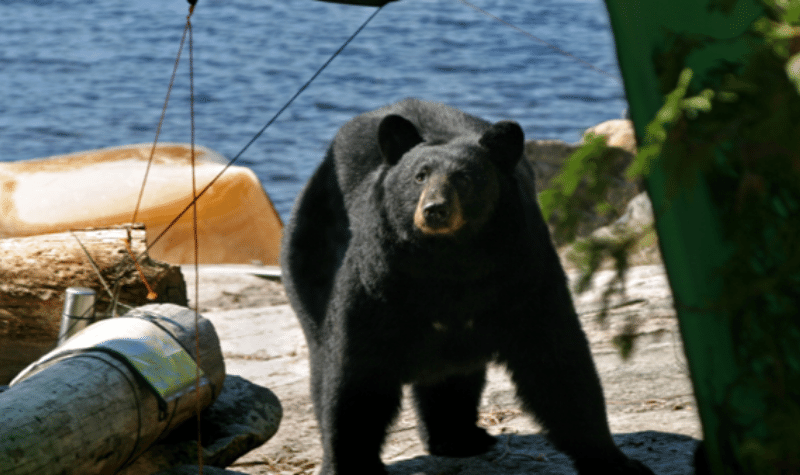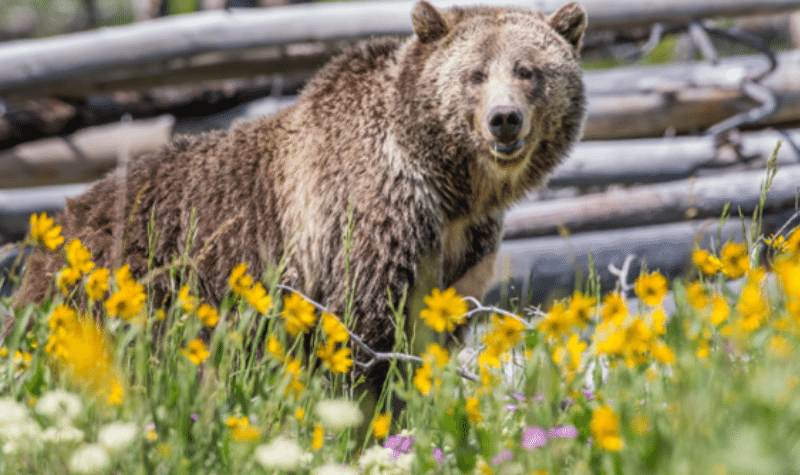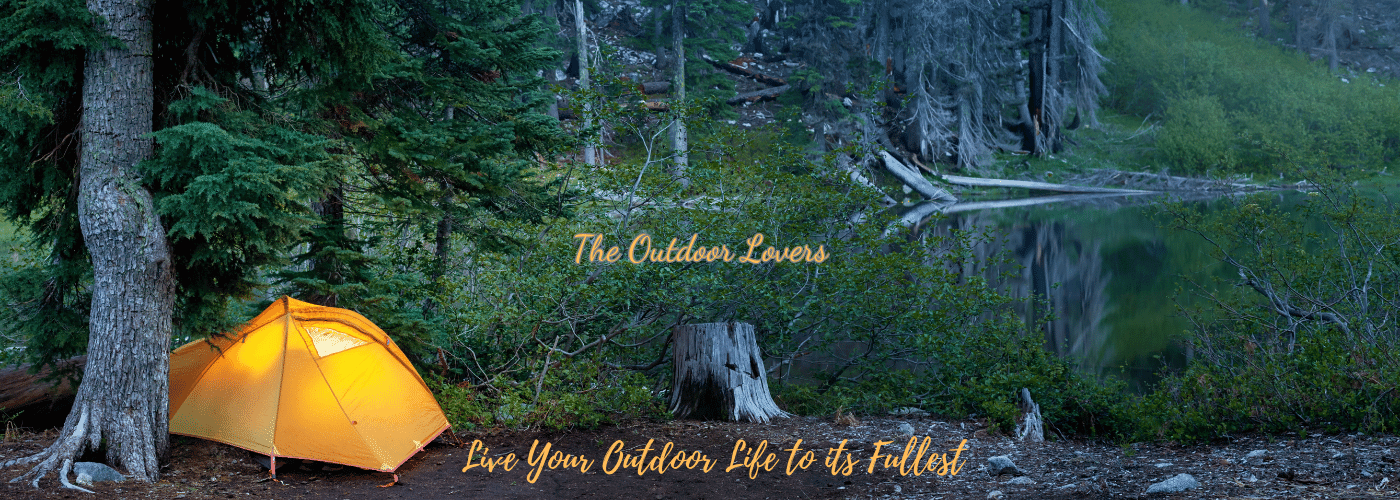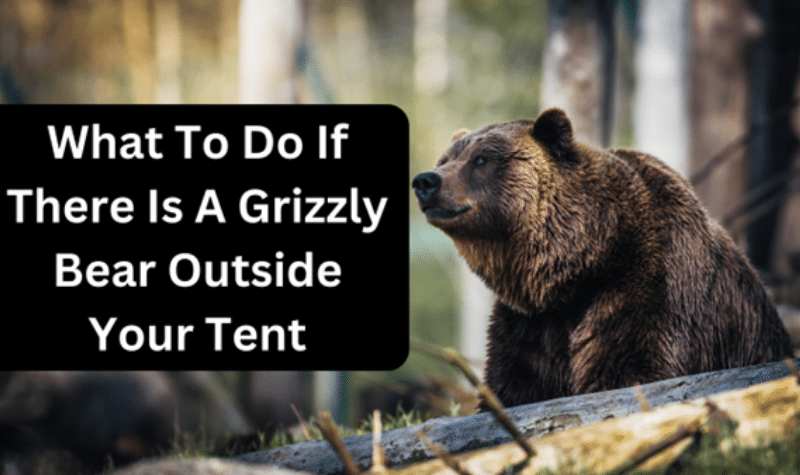Imagine the gentle hum of the wilderness as you drift off to sleep during a camping trip. But then, in the stillness of the night, you sense an unexpected presence: a grizzly bear outside your tent. Venturing into bear country is an exhilarating experience, but it also demands a keen awareness of potential encounters with these magnificent creatures. Knowing how to navigate such situations is paramount for the safety of campers and the bears. In this article, we will walk you through a step-by-step guide on the appropriate actions to take should you ever find a grizzly bear outside your tent.
What To Do If There Is A Grizzly Bear Outside Your Tent
Understanding Grizzly Bears and Bear Behavior
Grizzly bears, scientifically known as Ursus arctos horribilis, are majestic creatures primarily found in North America. These large mammals inhabit various environments, from dense forests to open meadows, mountain valleys, and coastlines. They are most prevalent in Alaska, western Canada, and parts of the northern United States like Montana and Wyoming.
Grizzlies are easily identifiable by their distinct hump on their shoulders and their long, curved claws, which they use primarily for digging and foraging. Their fur can vary in color from dark brown to a lighter golden hue, often with gray or silver tips – giving them a “grizzled” appearance, which is the origin of their name.
In terms of behavior, grizzly bears are generally solitary creatures, with females being particularly protective of their cubs. While they are omnivores, their diet primarily consists of fish, berries, and insects, though they won’t shy away from larger prey or scavenged meals when the opportunity arises. It’s essential to note that grizzlies are not naturally aggressive towards humans. Most confrontations arise from surprise encounters or when a bear feels threatened, especially if cubs are involved.
Understanding grizzly bear behavior is the linchpin of inappropriately reacting to encounters. By recognizing signs of agitation, curiosity, or defensiveness in a bear, campers can make informed decisions that prioritize safety. Grasping the nuances of their habits and temperament is not just about ensuring human safety but also about respecting and preserving the natural behavior of these magnificent animals.
Preparing for Camping in Bear Country

When you’re getting ready to camp where bears live, there are a few simple things to remember. Doing these can help keep both you and the bears safe.
1. Picking Your Campsite:
When deciding where to set up your tent, try to choose places that aren’t close to where bears live or feed. This means avoiding areas with lots of berries, fish streams, or dense vegetation. A little distance can make a big difference!
2. Storing Food the Right Way:
Bears have a great sense of smell; they might come looking if they catch a whiff of your snacks. To stop this from happening, use special bear-resistant containers. These boxes keep the smell in and bear out. If you don’t have one, you can hang your food high up in a tree, away from the trunk and ground. This way, even if a bear is curious, it can’t reach your supplies.
3. Always Have Bear Spray:
Think of bear spray as a safety tool. It’s a strong pepper spray that can help keep an approaching bear away. But it’s not enough to have it. Make sure you know how to use it and keep it somewhere easy to reach, just in case.
Remember, being prepared is the best way to enjoy your camping trip, and make sure everyone, including the bears, stays safe.
Steps to Take When Encountering a Grizzly Bear Outside Your Tent
1. Stay Calm:
It’s natural to feel scared, but panicking would make the bear more curious or even aggressive. Try to control your breathing and stay as quiet as you can.
2. Do Not Run:
Never run from a bear! They are fast and might chase you if you start running. Bears are hunters, and running can make you seem like prey.
3. Assess the Situation:
Look at the bear. Is it looking scared or aggressive? Defensive behaviors might include the bear stomping its feet or huffing. If it’s aggressive, it might show its teeth or charge.
4. Make Yourself Known:
Say something in a low, calm voice like, “Hey bear, it’s just me.” This helps the bear know you’re a human and not food.
5. Back Away Slowly:
Start moving backward, slowly, and carefully. No sudden moves. This tells the bear you’re not there to fight or threaten.
6. Create Space:
The more room between you and the bear, the safer you both are. If you’re with friends, get together so you look bigger as a group.
7. Use Bear Spray as a Last Resort:
Use your bear spray if the bear keeps coming closer and seems aggressive. Aim slightly down and create a spray barrier between you and the bear. Make sure you know how to use it before your trip!
8. If the Bear Approaches:
Even after all your efforts, stand firm if the bear still comes closer. Look bigger by raising your arms and standing on your tiptoes. This might make the bear rethink its approach.
Remember, most bears don’t want trouble. They’re more scared of you than you are of them. But being ready and knowing what to do can make all the difference in staying safe.
When a Bear Acts Aggressively: The “Play Dead” Technique

If a grizzly bear becomes aggressive and it seems like a physical attack is imminent, one recommended technique to deter further aggression is to “play dead.” This can communicate to the bear that you are not a threat. Here’s how to do it properly:
Lie Flat on Your Stomach:
As soon as it’s safe to do so, lie down on the ground, keeping your face down to protect your face and neck from potential injury.
Interlock Your Fingers Over Your Neck:
This provides an added layer of protection to a vulnerable area. It’s important to shield your neck from the bear.
Spread Your Legs Apart:
You create a wider base by positioning your legs in a spread stance. This makes it much harder for the bear to flip you over.
Stay as Still as Possible:
Once you’re in this position, stay quiet and try not to move. The bear might sniff you or even paw at you, but it’s essential to remain still until the bear loses interest and leaves the area.
The “play dead” technique is especially effective when the bear is acting defensively, such as when it’s surprised or protecting its cubs. It tells the bear you’re not a threat. Once the bear feels there’s no danger, it will usually leave the area.
However, always assess the situation, as this technique is primarily recommended for grizzly bear encounters and not for other species like black bears.
After the Bear Leaves: The Importance of Patience
Even after a bear has left your vicinity, remaining vigilant and patient is crucial. Here’s why:
Bears Can Be Curious:
Sometimes, a bear might just be moving to a nearby spot to observe from a distance. If you get up too quickly, you might surprise it again, which isn’t what you want.
Protective Mothers:
If the bear you encountered is a mother with cubs, she might linger nearby even after you think she’s gone. Mother bears are known for their protective instincts, and she might return if she perceives any threat to her young.
Double-check Your Surroundings:
Before you decide to move, take a moment to observe your surroundings quietly. Look and listen for any signs of the bear’s presence. It’s better to spend a few extra minutes making sure than to risk another encounter.
Bears Remember Threats:
While bears typically don’t seek confrontation, if they felt threatened during your encounter, they might circle back to ensure the threat (which they perceive as you) has been neutralized. Waiting ensures you’re not still seen as a problem.
Assess the Situation: Check Yourself, Then Report
After a close encounter with a bear, it’s essential to follow these steps:
Check for Injuries:
Before anything else, look over your body and check for any injuries. It’s easy to get a scratch or hurt yourself without realizing it in the heat of the moment. If you’re with others, help each other check for wounds that might not be immediately noticeable.
Attend to Your Campsite:
Once you’re sure you and anyone with you is okay, see if the bear disrupted your campsite. Secure any food or gear that might have been scattered, ensuring it won’t attract the bear again.
Report the Encounter:
It’s essential to let the local authorities or park officials know about the bear encounter. This isn’t just for your safety but for the safety of others who might camp in the same area. Reporting helps officials track bear activity and provides valuable information to ensure future campers are well-informed and safe.
Remember, bear encounters can be startling, but by staying calm, checking yourself, and reporting, you ensure safety for yourself and others in the area.
Preventing Future Bear Encounters: Camp Smart and Stay Safe

An encounter with a bear can be a wake-up call to ensure you always practice the best safety habits while camping. Here’s how to reduce the chances of meeting a bear again on your trips:
Bear-Safe Food Storage:
Continue using bear-resistant containers or hanging your food high up in trees. Bears have an incredible sense of smell, and even the slightest food scent can lure them into your campsite.
Clean Cooking and Eating Areas:
Always clean up immediately after cooking or eating. This includes washing dishes, disposing of food scraps, and wiping down tables. Even small crumbs can attract bears.
Avoid Camping Near Bear Hotspots:
Stay away from areas known for frequent bear activity, like berry patches, salmon-filled streams, or dense woods. It’s better to admire these zones from a distance during the day and camp further away.
Make Noise:
Bears usually don’t want to bump into humans. You warn bears of your presence by making noise as you move around, especially in dense brush or areas with low visibility, giving them time to leave the area.
Respect Bear Habitats:
Remember, when you’re camping, you’re visiting their home. Always respect their space. Moving to a different camping spot is a good idea if you see signs of bears, like fresh tracks or droppings.
Educate Yourself and Others:
The more you know about bears, their habits, and their habitats, the better equipped you’ll be to avoid them. Share this knowledge with fellow campers and friends.
By proactively taking these measures, you ensure your safety and respect the wild animals and their habitats. Coexisting with nature requires awareness, respect, and understanding.
Additional Resources
If you are looking for more tutorials, walkthroughs and troubleshooting about camping and enjoying the outdoors, here are some additional posts to check out:
Conclusion
Camping in bear country can be an exhilarating experience, but being prepared and informed is crucial. Understanding grizzly bears and their behavior, ensuring your campsite and food storage practices do not attract bears, and knowing how to react calmly during a bear encounter can significantly enhance your safety and the wildlife’s. Always remember running is not an option; instead, use bear spray as a last resort, create distance, and assess the bear’s behavior to determine your next steps.
Playing dead is often the most effective strategy if an aggressive encounter occurs. After the encounter, wait until the bear leaves, assess for injuries, and report the encounter to the local authorities. By respecting bear habitats and practicing bear-safe camping, we can enjoy the great outdoors while promoting coexistence with our remarkable wildlife. Thanks for reading, If you think I forgot something or if you simply want to share a story or some advice, feel free to leave your comment below.! Be Safe and Have Fun.!

